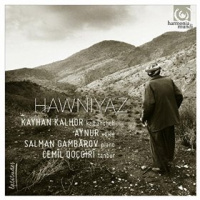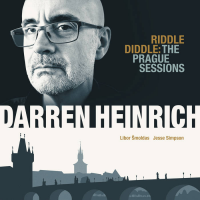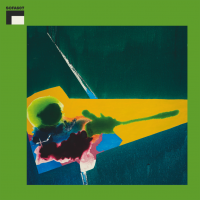Home » Jazz Articles » Album Review » Kayhan Kalhor: Hawniyaz
Kayhan Kalhor: Hawniyaz
Kalhor, a musical prodigy, was born in the Kurdish city of Kermanshah and was creatively influenced by his travels to other regions of Iran where he absorbed particular styles. He is best known as a member of Yo-Yo Ma's Silk Road Ensemble and has had a number of his compositions for that group nominated for Grammy Awards. Kalhor is also a co-founder of the ensembles Dastan and Ghazal, the latter specializing in a blend of Persian and Indian improvisations.
On the album Hawniyaz Kalhor is joined by Kurdish vocalist Aynur Dogan (who uses only her first name as an artist). A regional performer, she has worked with a substantial number of well-connected Western pop musicians. Azerbaijani jazz pianist and composer Salman Gambarov has played jazz clubs and festivals throughout the world and has the most solidly defined background in the jazz genre though he experiments with numerous less-identifiable hybrids. German-born, of Kurdish descent, Cemîl Qoçgirî plays the tenbûr, a long-necked member of the lute family and he is renowned for his experimental approach to the instrument.
Aynur, who sings in her native language, effectively uses her voice as a fourth instrument in the quartet. The kamancheh and tenbûr have a wide range of pitches; both being capable of sounding like multiple instruments and Qoçgirî's harmonizing lute is very versatile in its sensitivity and richness. Hawniyaz runs just under one hour with five long compositions in the vein of improvised Islamic music known as "mugham." The pieces are a blend of this tradition and it's fusion alternative, mugham jazz (Azerbaijani jazz).
Despite the jazz references, Hawniyaz is outside the scope of genres as we think of them. "Delale" is mysterious and far away without being gauzy. Aynur's vocal is powerful in contrast to the elusive sound of Kalhor's kamancheh. The gentle guitar-like plucking of the tenbûr supplies the extended introduction to "Rewend," later taking a more percussive part and combined with Gambarov's piano takes the piece to a jazzier rhythm. Likewise, "Malan Barkir-Bêrîvanê" comes close to jazz improvisation while "Xidire min" and the closing piece, "Ehmedo-Ez reben Im" are uncategorized amalgams of classical, folk and jazz elements. Hawniyaz is a striking album with a very different approach; it is intelligent, accessible and compelling.
Track Listing
Delale; Rewend; Xidire min; Malan Barkir-Bêrîvanê; Ehmedo-Ez reben Im.
Personnel
Kayhan Kalhor: kamancheh; Aynur: chant; Cemîl Qoçgirî: tenbûr; Salman Gambarov: piano.
Album information
Title: Hawniyaz | Year Released: 2016 | Record Label: Harmonia Mundi
Tags
PREVIOUS / NEXT
Support All About Jazz
 All About Jazz has been a pillar of jazz since 1995, championing it as an art form and, more importantly, supporting the musicians who make it. Our enduring commitment has made "AAJ" one of the most culturally important websites of its kind, read by hundreds of thousands of fans, musicians and industry figures every month.
All About Jazz has been a pillar of jazz since 1995, championing it as an art form and, more importantly, supporting the musicians who make it. Our enduring commitment has made "AAJ" one of the most culturally important websites of its kind, read by hundreds of thousands of fans, musicians and industry figures every month.



















